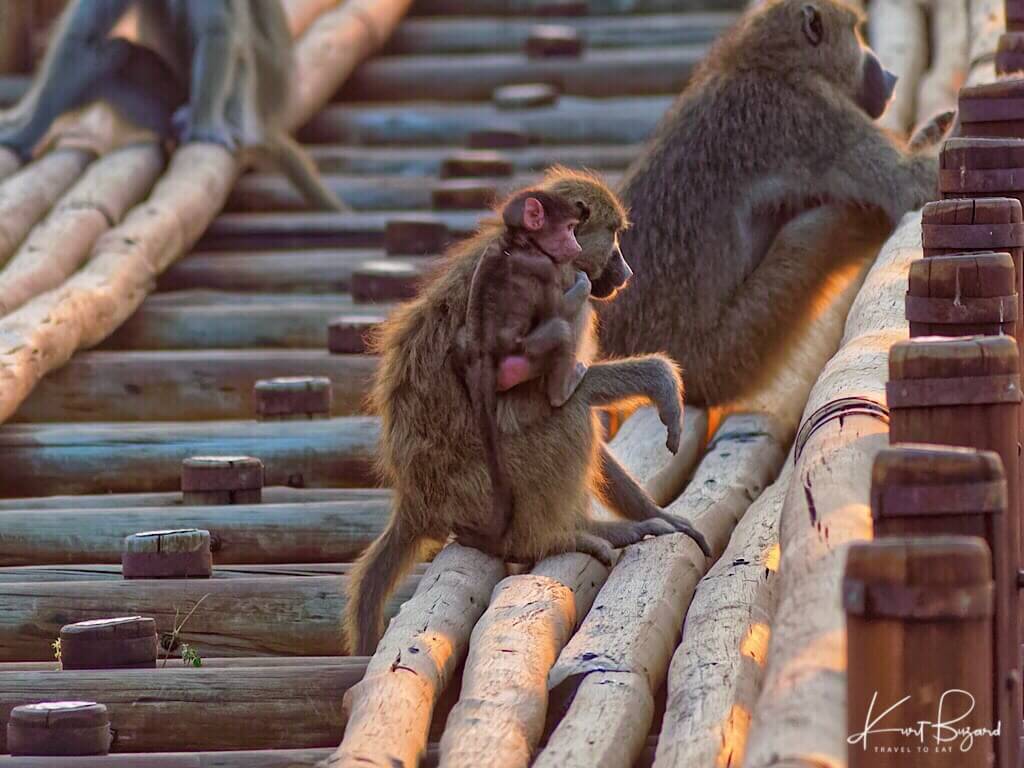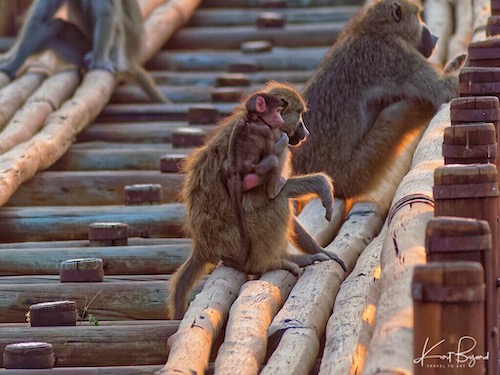
Observing Monkeys with their young is a fascinating experience. We get to see how similar many of their ways with the young are compared to those of humans. They bond with their young and keep them very close. They nurture them and care for them. Monkeys are primates with many emotions too. They are able to show grief, anger, happiness, and more. That could all be part of the evolution process that all primates have gone through. Humans and monkeys are both primates. But humans are not descended from monkeys or any other primate living today. We do share a common ape ancestor with chimpanzees. It lived between 8 and 6 million years ago. But humans and chimpanzees evolved differently from that same ancestor. All apes and monkeys share a more distant relative, which lived about 25 million years ago.
Similarities Between Humans and Primates
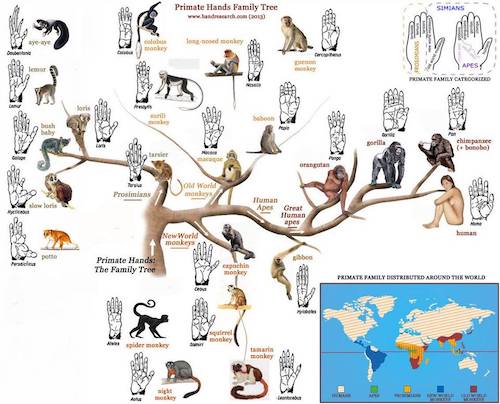
The business of finding objective differences between monkeys and humans has proven to be harder than first imagined. The use of tools is shared between monkeys and humans and dolphins seem to have language skills. Instead, let us consider the traits we share as fellow primates. For about 365 million years, most animals walked on all fours. But around 4.4 million years ago, a woodland primate called ardipithecus stood up and walked with an awkward wobble. After a couple million years, australopithecus emerged (its most famous member is “Lucy”). Just like humans its knees bent inward, making walking more natural. Primates are the only mammals with opposable thumbs. Notharctus, a lemur-like monkey that lived 50 million years ago, was the first ape to develop human-like hands: A thumb, long fingers, and nails instead of claws, which are great for climbing trees. Finally, we see more colors than many animals. However, some animals see colors we cannot. Spiders and many insects can see a type of light called ultraviolet that most humans cannot see. Other animals, like snakes, are able to see infrared light.
Chacma Baboon
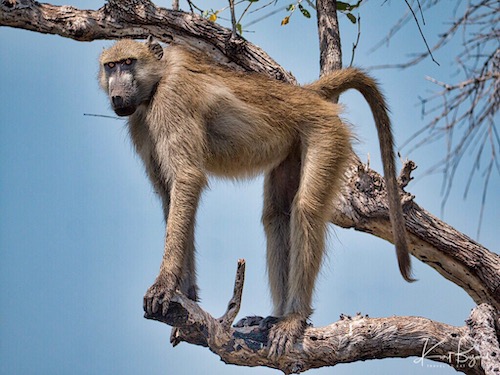
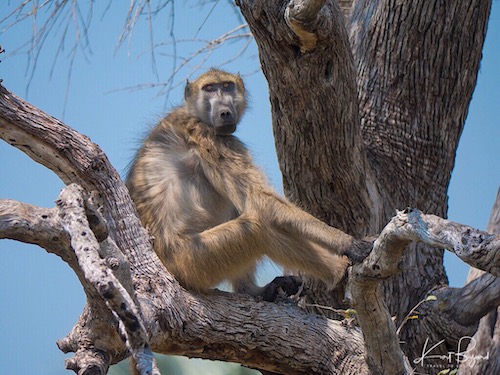
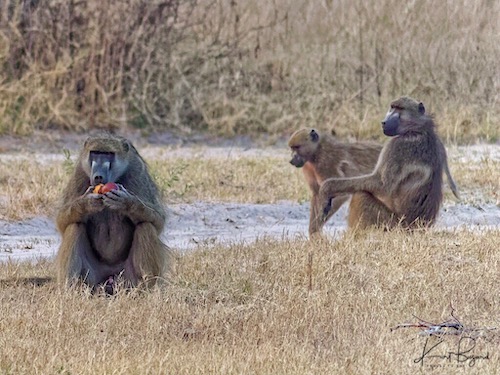
Baboons are some of the world’s largest monkeys. There are five species of baboon—olive, yellow, Chacma, Guinea, and Hamadryas—scattered across various habitats in Africa and Arabia. The baboon, like other Old World monkeys, does not have a prehensile (gripping) tail, but it is still able to climb when necessary. All baboons have dog–like noses, powerful jaws, sharp canine teeth, and thick fur. The male baboon also has a ruff—a longer mane around its neck. The Chacma Baboon (Papio ursinus), also known as the Cape baboon, is, like all other baboons, from the Old World monkey family. The Chacma Baboon is perhaps the longest species of monkey, with a male body length of 20–45 in (50–115 cm) and tail length of 18–33 in (45–84 cm). It also one of the heaviest; the male weighs from 46–99 lb (21–45 kg) with an average of 70 lb (31.8 kg). The smaller female Chacma weighs from 26–55 lb (12–25 kg), with an average of 34 lb (15.4 kg). There are three subspecies, differentiated by size and color. The Cape chacma is a large, heavy, dark-brown, and has black feet. The gray-footed chacma is slightly smaller than the Cape chacma, lighter in color and build, and has gray feet, this is the one found in Botswana. The Ruacana chacma generally appears to be a smaller, less darkly colored version of the Cape chacma. The chacma baboon is omnivorous with a preference for fruits, while also eating insects, seeds, grass, smaller vertebrate animals, and fungi (the desert truffle Kalaharituber pfeilii).
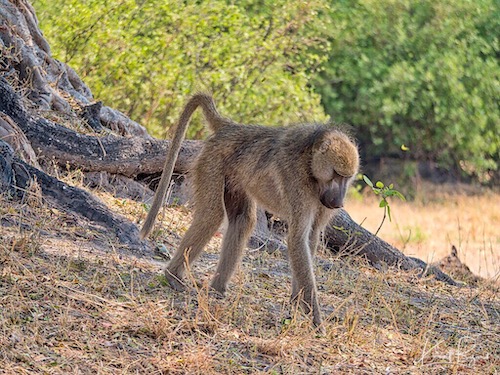
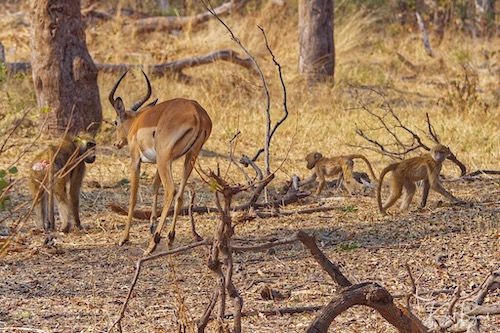
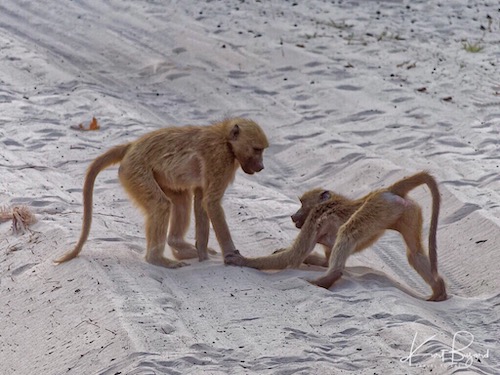
Located primarily in southern Africa, the chacma baboon has a wide variety of social behaviors, including a dominance hierarchy, collective foraging, adoption of young by females, and friendship pairings. The dominant male pictured above has his tail raised high, a symbol of his leadership. Dominance does play a role in group foraging decisions. A dominant individual (usually the alpha male) leads the group to easily monopolized resources. The group usually follows, even though many subordinate members cannot gain access to that particular resource. Baboons communicate with each other primarily through body gestures and facial expressions. The most noticeable facial expression is an open-mouth threat where the baboon bares the canine teeth. Preceding this may be an eyelid signal, raising the eyebrows and showing the whites of the eyes, that is used to show displeasure. If a baboon really becomes aggressive, the hair may also stand on end, threatening sounds will be made, and the ground will be slapped.
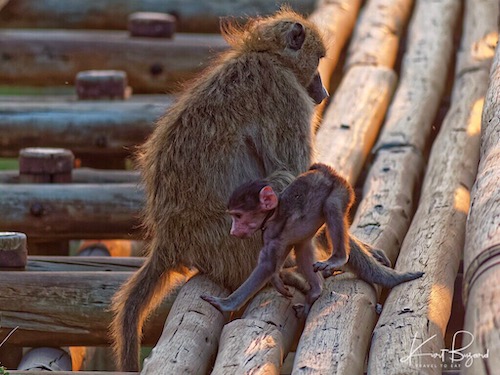
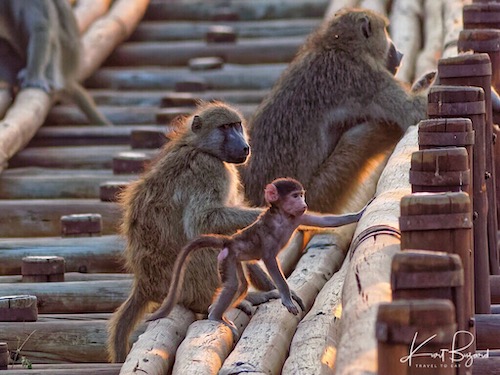
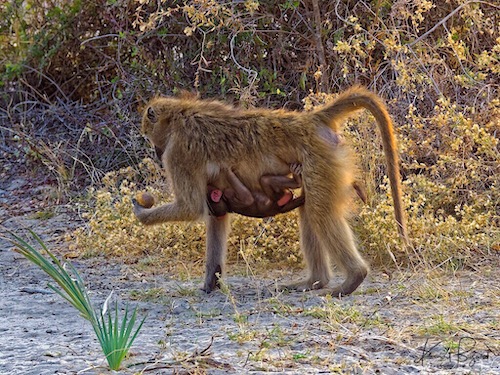
A baby baboon is born with an instinct to grasp tightly with both hands and feet. They need this ability to cling to their mothers chest as she makes her way through trees or brush. The female will be pregnant for 6 months and give birth to one, very rarely two, youngsters. Infants ride against the mothers stomach or chest for the first several weeks, and then begin to ride on her back, usually in an upright position like a little jockey. As a bonus, the infant clings in a perfect position to suckle whenever it chooses to, particularly important because primate milk is not very rich, unlike that of seals or caribou, or even cows. Baboon babies are extremely intelligent, alert and curious. Within a few weeks the youngsters begin to explore their world climbing, running and jumping. By three or four months, the infant begins to get a bit of food on its own, starting with easy foods like flowers and berries and fresh green grass blades. Adoption behavior has been observed in chacma baboons. Orphaned baboons whose mothers have disappeared or died are often too small to care for themselves. In one study of nine natural orphans and three introduced orphans, all but one orphan were adopted by another member of the group.
Vervet Monkey
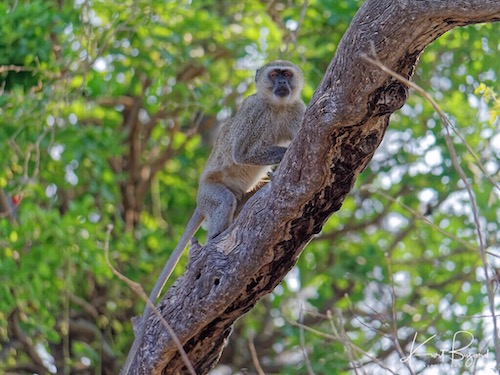
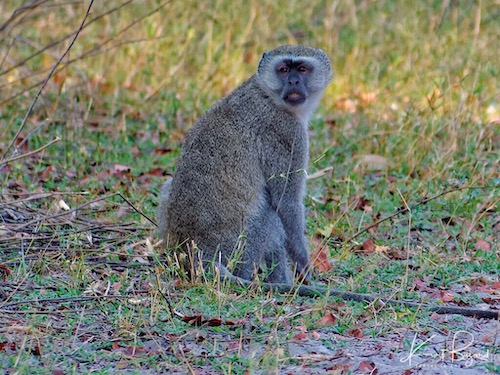
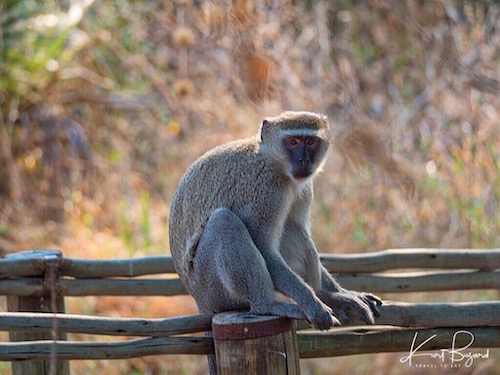
The Vervet Monkey (Cercopithecus aethiops) is one of the most endearing animals for guests to see on safari, but they are usually pests around lodges where they raid kitchens, rooms and food tables. They have actually learned Horton turn a doorknob, you have to be sure to lock your room. Their black faces add to the endearment, whilst the characteristic blue scrotum of the male is the subject of much debate at first sight. Vervet monkeys live in troops, the size depending on the availability of food. In the Okavango Delta where food is plentiful the troops can be as large as fifty individuals. They sleep in trees at night, coming down to feed around sunrise. These mostly herbivorous monkeys have black faces and grey body hair color, ranging in length from about 20 inches (50 cm) for males to about 16 inches (50 cm) for females. As always there are subspecies, Cercopithecus aethiops ngamiensis, from north-eastern Botswana and the Okavango, has pale feet and a yellowish back and the tail is darker (especially towards the tip) than in other southern vervets.
I hope you enjoyed enjoyed the post, please leave a comment.

